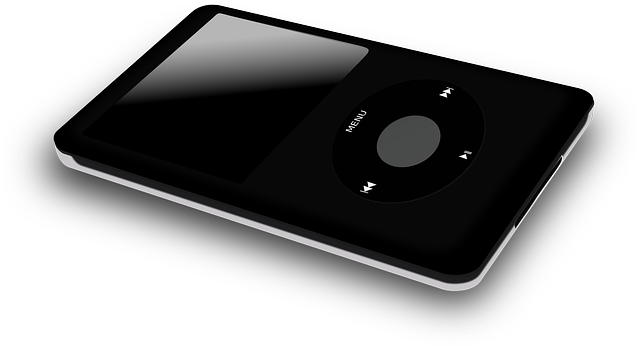TL;DR:
DivX Encoding, or simply DivX, is a powerful video compression technology that optimizes digital media storage and transmission. It balances file size reduction with minimal loss of video quality, making it ideal for online streaming and file sharing. DivX's universal compatibility across platforms like Windows, macOS, iOS, and Android makes it a preferred choice for content creators and consumers. By efficiently compressing videos to a fraction of their original size while preserving quality, DivX enhances cross-platform file sharing, reduces transfer times, and provides robust security. Its adoption by streaming services and content creators demonstrates its effectiveness in the dynamic digital landscape.
Discover the power of DivX Encoding, a revolutionary format ideal for sharing files across diverse platforms. In today’s interconnected world, efficient cross-platform file transfer is paramount. This article explores what is DivX Encoding and how it facilitates seamless compatibility, enhancing collaboration and accessibility. From understanding its encoding principles to real-world use cases, we delve into the advantages and future trends of DivX, positioning it as a game-changer in digital communication.
Understanding DivX Encoding: A Comprehensive Overview

DivX Encoding, often simply referred to as DivX, is a video compression technology designed to facilitate efficient storage and transmission of digital media content. It’s more than just a codec; it’s an encoding standard that plays a pivotal role in enabling seamless sharing of high-quality videos across diverse platforms. The core strength of DivX lies in its ability to strike a delicate balance between file size reduction and minimal loss of video quality, making it ideal for online streaming and file sharing.
This technology employs sophisticated algorithms to analyze and compress video data without significantly compromising visual fidelity. By intelligently removing redundant or less perceptible information, DivX encodes videos in such a way that they can be easily played back on various devices, from high-end PCs to mobile phones. This universal compatibility is one of the primary reasons why DivX has become a preferred choice for content creators and consumers alike when it comes to sharing files across different platforms.
The Need for Cross-Platform File Sharing

In today’s interconnected world, where collaboration and communication are seamless, the need for cross-platform file sharing has never been more apparent. With professionals, creators, and individuals working across multiple devices and operating systems, a unified approach to sharing files is essential. The traditional methods of sending large files via email or using physical storage devices often prove cumbersome, time-consuming, and insecure. This is where DivX Encoding steps in as a game-changer.
DivX Encoding is a powerful technology that enables the efficient compression and encoding of video and audio files, allowing for seamless cross-platform sharing. By utilizing advanced algorithms, it reduces file sizes without significantly compromising quality, making it ideal for high-definition media. This ensures that users can share large files, such as videos or documentaries, instantly and securely, regardless of the platform they are using—Windows, macOS, iOS, or Android.
Advantages of DivX for Efficient File Transfer

DivX encoding offers a range of advantages for efficient file transfer, making it an ideal choice for sharing files across different platforms. One of its key strengths is compression efficiency—DivX can compress video and audio content to a fraction of its original size while maintaining excellent quality. This ensures that large media files can be transferred quickly and easily over the internet or through other digital channels, reducing the time and bandwidth required compared to other formats.
Additionally, DivX supports a wide range of devices and platforms, ensuring compatibility across various streaming devices, smart TVs, computers, and mobile phones. This versatility allows users to share content seamlessly without worrying about format compatibility issues. Moreover, DivX encoding provides a robust security feature through encryption, protecting the integrity of files during transfer and preventing unauthorized access or alterations.
How DivX Enables Seamless Compatibility

DivX, a powerful video encoding technology, plays a pivotal role in facilitating seamless compatibility across diverse platforms for file sharing. Its core strength lies in the ability to compress video content efficiently while preserving high-quality visuals and audio, making it ideal for streaming and downloading. By utilizing advanced compression algorithms, DivX ensures that videos can be shared and accessed smoothly, regardless of the operating system or device.
This compatibility is achieved through DivX’s versatile codec, which is supported by numerous media players and applications worldwide. This widespread adoption means users can effortlessly share and view videos on various platforms without worrying about compatibility issues. Whether it’s a mobile device, desktop computer, or smart TV, DivX-encoded files ensure a consistent viewing experience, enhancing the overall convenience of digital content sharing.
Real-World Use Cases: Success Stories of DivX

DivX encoding has proven its worth in various real-world scenarios, showcasing its versatility and effectiveness in file sharing across different platforms. One notable success story involves video content creators who rely on DivX to compress and share high-quality videos seamlessly. By leveraging DivX, these creators can reduce file sizes without significant quality loss, ensuring a smooth viewing experience for their audience, regardless of the device or platform they are using.
Another use case highlights the benefits of DivX in streaming services. Many streaming platforms have adopted DivX encoding to optimize video delivery, especially when dealing with diverse internet connections. This has resulted in improved user satisfaction, as viewers can enjoy crisp, buffer-free streaming, even on mobile devices or older hardware configurations. These success stories underscore how DivX encoding facilitates efficient file sharing, ensuring content accessibility and a positive user experience across various digital landscapes.
Future Trends and the Evolving Role of DivX

DivX, known for its video compression technology, is undergoing a transformation as we enter an era defined by diverse digital platforms and ever-growing content consumption. The future trends in file sharing and multimedia delivery are shaping up to be a testament to DivX’s evolving role. With the rise of streaming services, cloud storage, and mobile accessibility, there’s a growing need for versatile and efficient file formats that can adapt to these dynamic environments.
What is DivX Encoding? It’s a video compression standard designed to balance quality and file size, making it ideal for sharing content across various platforms. As technology advances, DivX continues to innovate, incorporating new features like improved compression ratios, high-quality audio support, and enhanced compatibility with modern playback devices. This evolution ensures that DivX remains a game-changer in the digital landscape, facilitating seamless content distribution while optimizing user experiences.
DivX Encoding, as demonstrated through its various advantages and real-world applications, stands out as a game-changer in cross-platform file sharing. Its ability to facilitate efficient file transfer while ensuring seamless compatibility across different systems makes it an ideal solution for today’s digital era. Understanding what is DivX Encoding and leveraging its capabilities can revolutionize how folks navigate and share files, promising a future where data exchange is smoother and more accessible than ever before.
